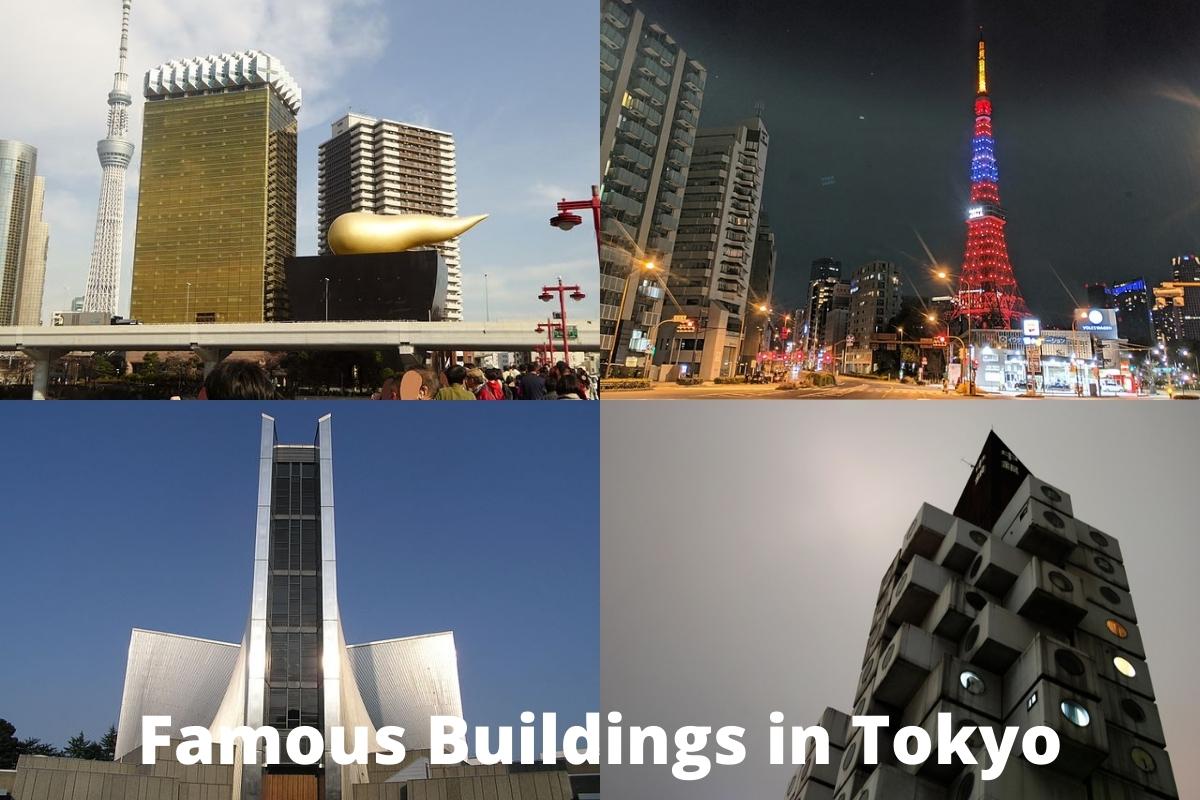The city of Tokyo, Japan is a bustling hub of innovation and growth in many different areas. It is a city that’s filled with intricately-designed buildings that are often done according to the modern and the contemporary architectural style.
Many of the most notable buildings in the Japanese capital city are among the most stunning designs in the continent of Asia, as well as the world.
In this article, we will examine 10 of the most famous buildings in Tokyo and look closely at the architects behind them, as well as their purpose.
Famous Buildings in Tokyo
1. Tokyo Tower
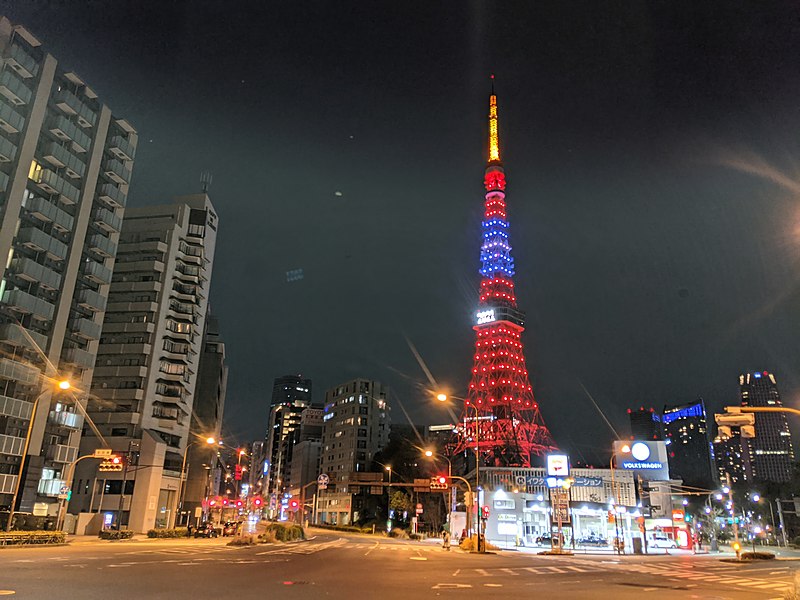
One of the city of Tokyo’s most iconic and distinct landmarks, as well as one of its most well-known Japanese buildings is the Tokyo Tower.
This massive and imposing structure stands at a height of 1,093 feet and is made of steel, much of which was repurposed metal that had been taken from decommissioned United States tanks that were used and damaged in the Korean War.
The tower was designed by Tachū Naitō, one of the most innovative and brilliant Japanese architects who was known for his work in creating towers and other high-reaching structures that were made to withstand earthquakes and other natural elements.
The Tokyo Tower began to be constructed in the summer of 1957 and was completed a year later.
It was built to be used as an important piece of communications infrastructure for the city of Tokyo and also as an observatory for tourists to take in the incredible view of the Tokyo skyline, which is especially impressive at night.
It stands out among many other towers of similar design through the bold red and white coloring, which match the Japanese national flag’s colors.
2. Mode Gakuen Cocoon Tower
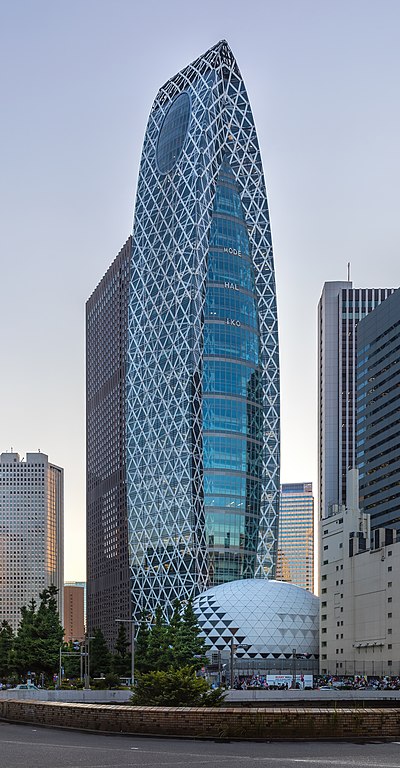
There is little dispute among those living in Tokyo and those who visit the city that one of the most unique buildings is the Mode Gakuen Cocoon Tower.
This massive tower stands at a height of 669 feet and is located in the Nishi-Shinjuku district of Tokyo. The 50-story Mode Gakuen Cocoon Tower serves as an educational facility, but it’s more well known throughout Japan, and also throughout the world, as one of the great architectural masterpieces.
Mode Gakuen is a prominent college of business, design, fashion and many other fields of study. Leaders from this institution held an open competition in which various individuals or companies could submit their design for the building’s construction.
The winner was a draft created by a group of architects under the name of Tange Associates, who said the structure’s cocoon-like shape, as well as the criss-crossed lines were meant to symbolize the nurturing and education that the students inside would receive. It was completed in 2008.
3. Nakagin Capsule Tower
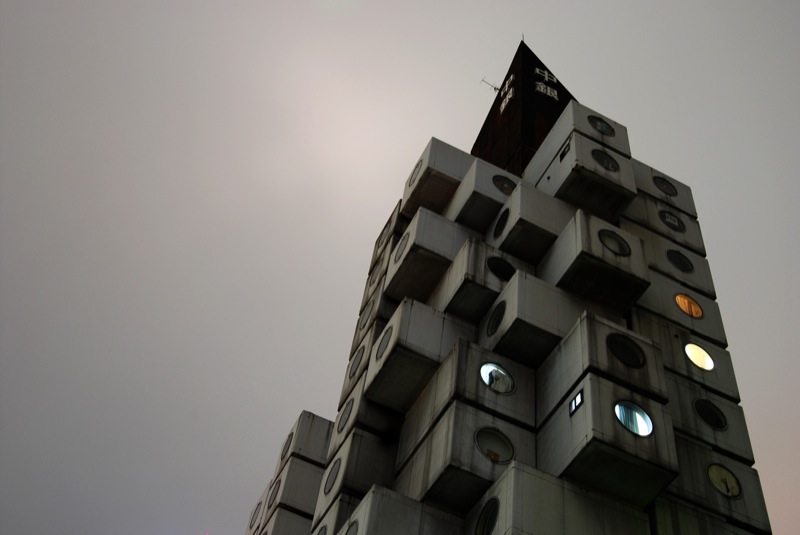
The Nakagin Capsule Tower is one of the most prominent buildings in Tokyo’s Chūō-ku district.
It is a building that consists of various square shapes that protrude from the side of the structure in a manner consistent with the Metabolism architectural style that was popularized by Kisho Kurokawa in the 1970’s and 1980’s throughout Japan’s largest cities.
Kurokawa himself designed the Nakagin Capsule Tower and the 13-story building is used as a residential and office structure.
Construction on the tower began in 1970 and the mostly-concrete foundation and walls were done within the first year. The rest of the Nakagin Capsule Tower was finished by 1972 when it was opened to the public.
Unfortunately, as of 2022, the building is in the process of being demolished to make way for a new structure, but there is an effort underway to create a 3D digital archive of the Nakagin Capsule Tower’s exact design—both inside and out.
4. Tokyo Skytree
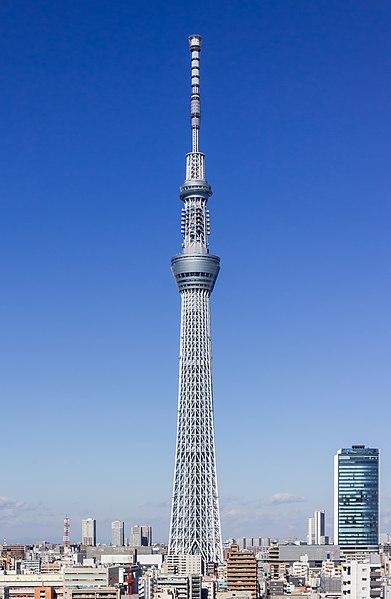
Another one of the most well-known buildings in Tokyo and a structure that’s also well-recognized by many who live in, or visit the city is the Tokyo Skytree.
This massive tower stands in the Sumida district of Tokyo and stands at a height of 2,080 feet at the antenna spire’s peak.
The tower was initially built to function as a piece of communication infrastructure as it is used today for broadcasting various television and radio station signals.
The Tokyo Skytree was designed by Nikken Sekkei, which is one of Japan’s most prominent architectural firms.
Construction began on the project in the summer of 2008 and it would take work crews, engineers and architects four years to complete the tower before it was opened in 2012.
The Tokyo Skytree is best-known to those in the city of Tokyo for its observation deck at the top of the 13-story structure, as well as the intricate lighting system that often paints a variety of color combinations across the tower at night.
5. Tokyo International Forum
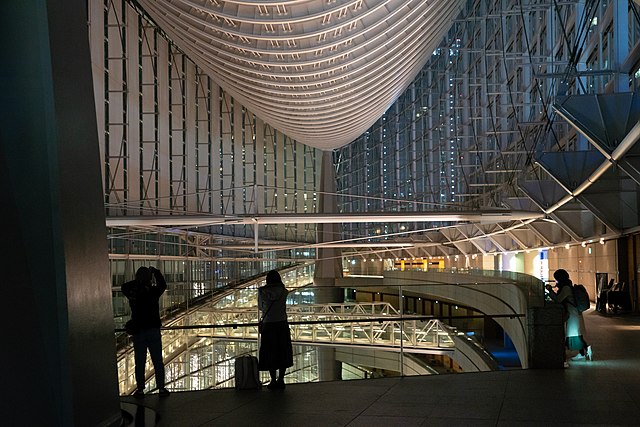
The Tokyo International Forum is one of the Tokyo Yūrakuchō Business District’s most notable buildings, although the structure actually sits within the Marunouchi commercial district.
It was designed by Rafael Viñoly, who is recognized as one of the world’s leading architects in multi-story structures and head of his firm, Rafael Viñoly Architects.
The Tokyo International Forum is a well-known hub of business and commerce and has been since it was established. The structure went under construction in the early 1990’s and it was finally finished in 1995 before opening to the public a year later.
The Tokyo International Forum has been used for a wide variety of events over the years since it was erected and draws a considerable amount of money for the city through tourism and events each year.
6. Tokyo Metropolitan Government Building
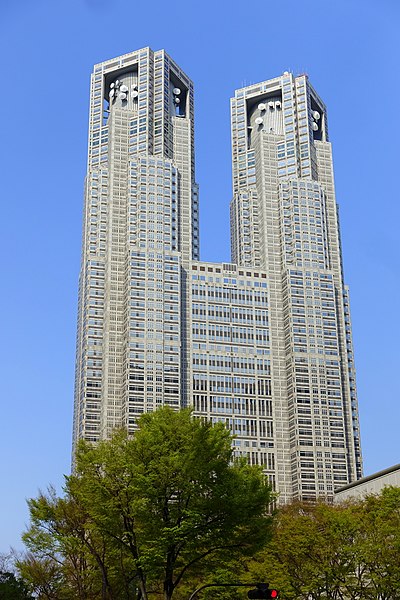
The Tokyo Metropolitan Government Building is one of the most prominent buildings in the city and is used as the official facility for all of the Tokyo Metropolitan Governmental functions.
This massive, sprawling complex of structures is actually three separate buildings that each take up an entire city block. The Tokyo Metropolitan Government Building was designed by Kenzo Tange, who is widely considered to be among Japan’s most famous architects.
The buildings began to be constructed in the spring of 1988 and they were all finished in 1990. The largest of the three structures is built to resemble a large integrated circuit and the building is also the tallest city hall in the world.
7. St. Mary’s Cathedral Tokyo
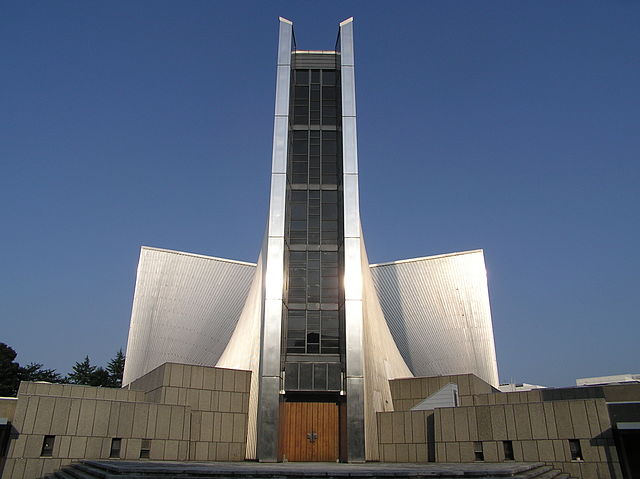
The Catholic Church is not well-known for its buildings throughout Japan, but the nation’s capital city is home to one of the church’s most famous buildings in the world, which is known as St. Mary’s Cathedral Tokyo.
This massive, beautifully-designed structure is yet another famous Japanese building that was designed by Kenzo Tange in the early 1960’s.
Construction began on the church in the 1960’s and it would be finished in 1964 when it was finally opened to the public with a special ceremony. The building was also the location of Tange’s funeral, which was held in 2005.
8. Sensō-ji
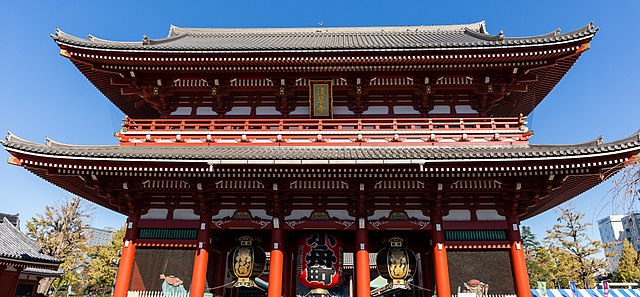
Undoubtedly, one of the most recognized and the most historic temples in Tokyo is the ancient Sensō-ji temple. This structure has stood for well over a thousand years and is known as one of the oldest Buddhist temples in Japan. It is believed that the temple was constructed in 645 A.D.
The Sensō-ji temple is dedicated to the bodhisattva Kannon (Avalokiteśvara). According to local legend, two fishermen found a statue of the Kannon in 628 and the village chief, Hajino Nakamoto, dedicated his own house as a temple.
9. Meiji Shrine
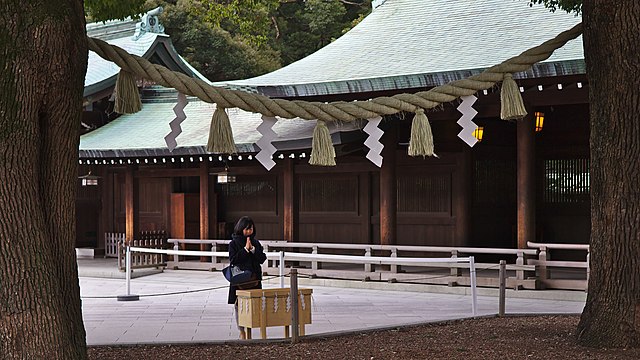
Another one of Tokyo’s most notable religious structures is also a worthy addition to our list of its most famous buildings.
The Meiji Shrine is a Shinto shrine that is said to be dedicated to the spirits of Emperor Meiji and his wife, Empress Shōken. The shrine sits in Shibuya, but the actual body of the emperor rests in Fushimi-momoyama,.
The Meiji Shrine began to be constructed in 1915 under the supervision and guidance of Itō Chūta, who was one of the most famous Japanese architects during the 20th century era of Imperial Japan.
The Meiji Shrine was finished in 1920 and it serves today as a major tourist attraction for those visiting the city, as well as those from various parts of Japan who visit the capital.
10. Asahi Beer Hall
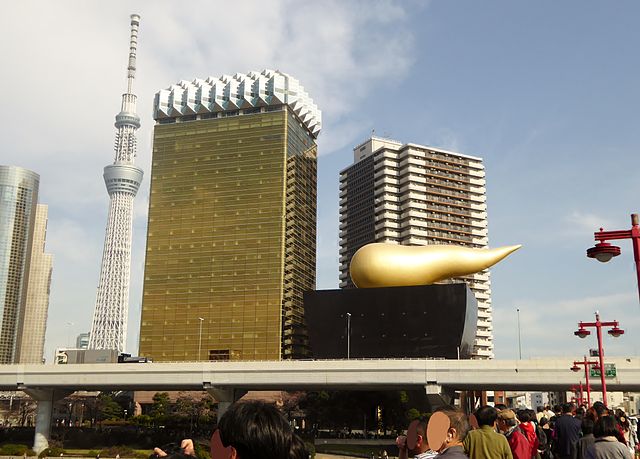
Every city has its own special landmarks and the Asahi Beer Hall is most certainly known as one of Tokyo’s most iconic.
The building was designed by French architect Philippe Starck, who is known for his expertise in designing structures to resemble everyday household objects.
The Asahi Beer Hall was specially-designed to resemble a giant beer glass, filled with the golden-brown liquid that the company is famously known for producing.
The building was built in 1989 and is has quickly become one of the most recognizable landmarks within the city of Tokyo due to its distinct coloration.
The building, along with its massive golden flame, which is the company’s logo, often garner the attention of tourists, but the flame has also been comically compared to human excrement by those who reside in Tokyo.

